Unlocking Business Resilience: How Caveat Loans Defend Against Rising Interest Rates and Inflation

Table of Contents
In today’s ever-evolving economic landscape, businesses face a daunting challenge—navigating the complex terrain of surging interest rates and inflation. These formidable economic forces can send shockwaves through business operations, impacting everything from revenue and costs to cash flow, debt management, valuation, and risk mitigation. This guide delves into the decisive role caveat loans can play as a strategic tool for businesses to weather the escalating interest rates and inflation and thrive in this challenging environment.
The Power of Interest Rates
Interest rates are instrumental in shaping the economic dynamics, directly influencing the supply and demand for credit. As interest rates climb, the allure of borrowing diminishes, leading consumers and businesses to adopt a more cautious stance towards taking on debt. This shift can manifest in reduced spending and diminished investments, ultimately affecting the revenue and profitability of businesses, particularly those tethered to credit-sensitive sectors such as housing, automotive, construction, and capital equipment. However, there’s a silver lining—higher interest rates can also stimulate credit supply, as lenders are inclined to offer loans with greater returns. This influence can significantly benefit businesses flush with cash or strong cash flows, allowing them to reap higher interest income or invest in assets with more appealing yields.
The Inflation Conundrum
Inflation, another heavyweight in the economic arena, involves a general increase in the prices of goods and services over time. This erosion of the purchasing power of money necessitates higher expenditures to obtain the same goods and services. For businesses grappling with surging input prices like raw materials, labour, energy, and taxes, this can translate into increased costs and reduced profitability. Yet, on the flip side, inflation can spark consumer and business expectations as they anticipate further price hikes. This effect can be a boon for businesses that pass these higher costs onto customers or capitalise on increased demand for their products and services.
Adapting to the Challenges
The impact of rising interest rates and inflation on business performance and financial reporting is multifaceted, with outcomes contingent on numerous factors, such as industry, market position, pricing power, cost structure, debt levels, growth potential, and risk tolerance. To navigate these challenges effectively, business owners must closely monitor interest rate and inflation trends while assessing how they influence their competitive advantage and business environment. Below are some adaptive strategies businesses can employ:
- Pricing Adjustments: Align pricing strategies with shifting market conditions and evolving customer preferences.
- Cost Optimisation: Elevate cost management and operational efficiency to fortify margins and bolster cash flow.
- Diversification: Reduce reliance on credit-sensitive sectors by diversifying revenue streams and customer segments.
- Debt Refinancing and Risk Hedging: Minimise borrowing costs and bolster liquidity through debt refinancing and interest-rate risk hedging strategies.
- Asset and Liability Revaluation: Reflect fair value changes in assets and liabilities due to fluctuations in interest rates and inflation.
- Risk Management Review: Identify and mitigate potential threats and opportunities via a revised risk assessment and management framework.
However, creative strategies can only do so much and available funds generated by streamlined business performance can sometimes fall short in the face of inflation and rising interest rates. So when additional funds arise, experienced business owners turn to the fastest funding option available today – the caveat loan.
The Need for Agile Financing
Even without the challenging realities of inflation and shifting interest rates, companies always encounter sudden funding needs, unforeseen expenses, and time-sensitive opportunities in today’s rapidly shifting business landscape that can chip away at any business’s profitability and purchasing power. Yet, traditional sources of finance, such as banks, often prove challenging due to their cumbersome, time-consuming, and costly processes.
Enter caveat loans—a potential financial lifeline for businesses in such scenarios. These secured loans leverage real estate as collateral, with a caveat on the property’s title, signalling the borrower’s interest. Caveat loans distinguish themselves from traditional mortgages in several key ways:
- Short-Term Focus: Typically, caveat loans have shorter terms, spanning from one to twelve months, as opposed to the multi-year commitment of traditional mortgages.
- Repayment Structure: They do not necessitate regular repayments but involve a lump-sum payment at the term’s conclusion, as opposed to the standard mortgage repayments.
- Property Control: While a caveat loan does not grant the lender the right to sell the property in case of default, it does restrict the borrower from selling or dealing with the property without the lender’s consent, in contrast to mortgages that empower lenders to repossess and sell the property under similar circumstances.
The Perks of Caveat Loans
Caveat loans offer several compelling advantages to businesses dealing with the pressures of rising interest rates and inflation:
- Speedy Approval: Caveat loans can often secure approval within 24 hours, sidestepping the need for extensive credit checks or income verification. The primary approval criteria revolve around the value and equity of the property used as collateral.
- Flexible Repayment: These loans can align with a business’s cash flow, devoid of regular repayments, alleviating cash flow stress.
- Competitive Interest Rates: Caveat loans frequently sport lower interest rates than alternative financing options, thanks to their collateralisation by the property’s equity, effectively reducing interest expenses and overall debt burdens.
- High Leverage: Businesses can access up to 80% of a property’s value in financing, contingent on property type, location, and condition, providing a more significant funding source than other financial channels.
The Caveats of Caveat Loans
However, caveat loans are not without their caveats, with businesses needing to be aware of the potential drawbacks and risks:
- Short-Term Commitment – Caveat loans offer short-term financial requirements, necessitating repayment over one to twelve months, an ideal choice for borrowers seeking to sidestep the challenges of protracted debt commitments. Failure to adhere to these terms may entail penalties or legal repercussions.
- Property Constraints – Borrowers must accept limitations on selling or dealing with the property used as collateral without lender consent, affecting options and flexibility in managing the property portfolio.
- Equity Prerequisite – Caveat loans mandate sufficient equity in the property used as collateral, with the property’s value surpassing any existing debts or mortgages on it. A decrease in property value or other claims on the property could jeopardise the borrower’s equity and the loan itself.
In light of these considerations, businesses must weigh the pros and cons of caveat loans before embarking on this financing option. While caveat loans can be a potent tool for managing cash flow and seizing opportunities amidst rising interest rates and inflation, they also come with substantial responsibilities and risks that require careful consideration.
At Tiger Finance, we always guide you every step of the way with loan experts well-versed in the current situation in the world of financing. You can avail of a free consultation with our in-house financing expert without obligation to give you the most accurate picture of your loan situation today.
Contact Tiger Finance today so that we can help you begin your journey to secure the exact hassle-free loan product that you need.
Table of Contents
Find MOre Information

The ABCs of Business Marketing and Caveat Loans
The ABCs of Business Marketing and Caveat Loans Table of Contents Marketing is the process of promoting products or services to other businesses or organisations

Business Owners and Caveat Loans: Why They Fit
Business Owners and Caveat Loans: Why They Fit Table of Contents A business owner owns and operates a commercial enterprise independently or with partners. Business

Optimising Business Finances: Understanding Working Capital and Caveat Loans
Optimising Business Finances: Understanding Working Capital and Caveat Loans Table of Contents Working capital is a crucial indicator of a business’s financial health and operational

Exploring the Advantages and Disadvantages of Caveat Loans
Exploring the Advantages and Disadvantages of Caveat Loans Table of Contents Like many financial options, Caveat loans come with their advantages and disadvantages. Let’s begin

Unlocking Opportunities 3: How Business Owners Can Harness the Power of Caveat Loans
Unlocking Opportunities 3: How Business Owners Can Harness the Power of Caveat Loans Table of Contents Caveat loans, a form of short-term financing, offer business

Unlocking Opportunities 2: How Property Investors Can Harness the Power of Caveat Loans
Unlocking Opportunities 2: How Property Investors Can Harness the Power of Caveat Loans Table of Contents In the fast-paced world of real estate investing, the


